How Avelo Airlines is building an ultra low-cost carrier that’s actually good
A new domestic airline took flight in California in April 2021. Avelo Airlines, an ultra low-cost carrier (ULCC) founded by aviation industry veteran Andrew Levy, carried its first passengers on a 75-minute trip from Burbank to Santa Rosa, in California wine country, aboard a 189-seat Boeing 737. For introductory fares that started at $19 one way along the route, fliers were offered a seat . . . but not much else. There was no in-flight Wi-Fi or entertainment system. Carry ons and checked bags both cost extra, as did reserving a seat. The only food or drink on offer was a free mini bottle of water.
In just over a year, Avelo has grown from 3 Boeing 737-800s to a fleet of 10 737s that include Next Gens, with at least 4 more aircraft expected to join by year’s end. The airline now offers more than 225 short-hop flights a week (the average trip lasts less than two hours) into more than two dozen destinations, all of them operated out of its three bases: Los Angeles’ Hollywood Burbank Airport, Connecticut’s Tweed-New Haven Airport, and the Orlando International Airport. As of Memorial Day weekend, Avelo had flown more than 800,000 passengers on more than 6,500 flights.
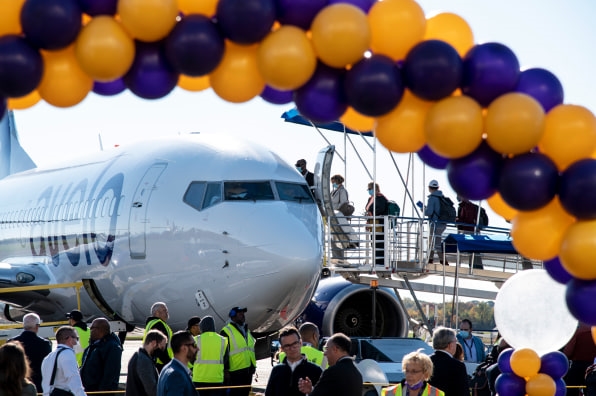
Its proposition to travelers remains as streamlined today as at its launch: Fliers purchase a low base fare—the average one-way ticket costs around $105—and pay for anything extra. But unlike most ULCCs today, Avelo doesn’t charge extra to change or even cancel a reservation, it’s extremely reliable (the airline has canceled less than 1% of its total flights, and has an on-time arrival rate of 82%, higher than the industry average), and is gaining a reputation for delivering on customer service. Recently, when weather caused a long delay, not only were passengers refunded their fares after arriving safely at their final destination, but they also were given a $100 credit. Most importantly, says Levy, Avelo is all about convenience, hopping to and from destinations that were woefully underserved. Prior to his airline’s arrival in Tweed-New Haven, its only flights out went to Philadelphia; now Avelo offers nonstops to 14 airports—more than any other airline serving Connecticut, a commuter-state alternative for dense New York City. From the curb of Tweed to the gate is five minutes, including TSA screening—and that’s without Pre-Check. Compare that to the glacially slow nightmare that is JFK or LaGuardia. “Our customers like the simplicity of our offering,” says Levy. “No one else is focusing as heavily on small, simple, convenient airports.”
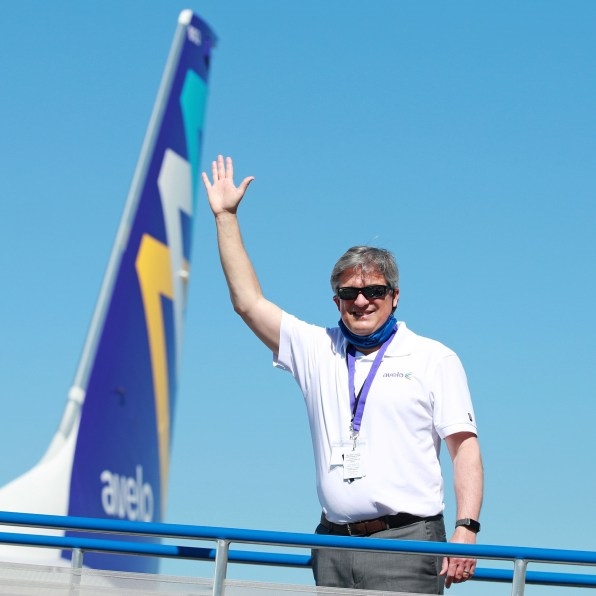
[Photo: courtesy of Avelo Airlines]
Before Avelo launched, “there were not enough seats to satisfy demand across all airlines,” Levy says. At the same time, passengers were facing increasingly bleak options: the rising airfares and decreasing comforts of legacy carriers or the often mediocre service of low-cost airlines. “We thought we could build something different and better,” he says. What he has created is an airline that is exceedingly efficient to operate while remaining exceedingly affordable and consistent for passengers—at least for now.
The timing of Avelo’s launch in the spring of 2021 was conspicuous, coming amid a global pandemic that had largely brought the entire aviation industry to its knees. “The best time to start a new airline has historically been during times of crisis,” Levy says. As legacy airlines suffer, opportunities for upstarts emerge.
Levy seems to thrive in times of uncertainty—an enviable trait when you’ve spent much of your working life in one of the most unforgiving of industries. He began his career in 1994 at the no-frills, low-cost carrier ValuJet as it went head-to-head with Delta. (ValuJet was eventually acquired by Southwest Airlines.) Levy later became cofounder and, eventually, president of another budget carrier, Allegiant Air, right before 9/11. He pulled Allegiant out of bankruptcy after the attacks and helped steer it for nearly 14 years. After a stint as CFO of United Airlines, he decided to upgrade the budget airline experience by creating Avelo Airlines.
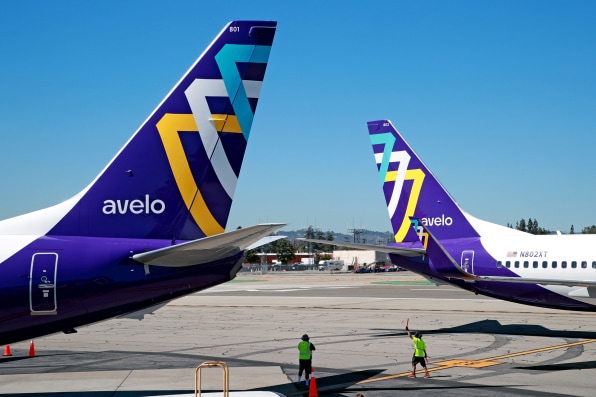
Levy had closed on the first round of financing for Avelo in January 2020 but hadn’t yet inked any deals on planes, computing systems, headquarters, and other foundations of a new business. That liquid capital allowed him to take advantage of an industry that, by March 2020, was in free fall. (Levy eventually secured more than $160 million during two rounds of funding.)
It’s typically difficult for a new airline to secure gates to fly into and out of congested airports. But as COVID-19 lockdowns dominoed across the country in 2020 and 2021, gates became available at regional airports, including L.A.’s coveted Hollywood Burbank Airport, from which legacy carriers exited to focus on busier LAX. According to the International Air Transportation Association, flights between unique pairs of cities—that is, a single origin city to a single destination city—fell globally by 30% in 2020, and were still down by 15% in 2021 from 2019 levels. That opened the door for a challenger airline looking to serve mostly secondary markets in areas where millions of people live.
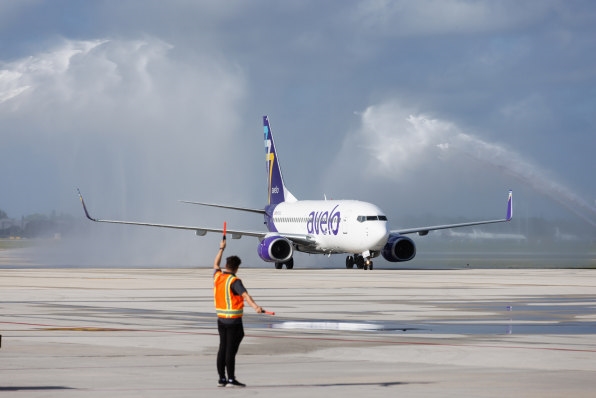
During the height of the pandemic, larger airlines were also doing everything possible to save their businesses, from laying off staff to trimming fleets. (The airline industry’s 2020 revenues fell about 60% from 2019.) “We were looking at a surplus of airplanes that were materially less expensive than before,” says Levy, “plus the availability of pilots, management professionals, and crew that were pushed into early retirement [by the pandemic].” He swooped in to buy planes and woo flight crews.
Levy structured his new airline to be as efficient as possible. In contrast to the hub-and-spoke model of traditional airlines, which allows them to have wider networks by routing passengers through select airports, Avelo’s point-to-point model—where planes fly out and into the same handful of bases—saves the airline money by enabling it to consolidate resources, such as maintenance teams, who can clean, refuel, and inspect every plane each night. Avelo’s 480 crew members, meanwhile, get to sleep in their own beds between shifts. That allows the airline to save on expenses for flight crews’ overnights and per diems, and gives them something of a normal home life. “We hear great feedback about the quality-of-life benefit of returning home every evening, especially from crew with families,” says Levy.
The airline industry hasn’t seen a new domestic mainline ULCC launch in at least 15 years. Today, the ULCC landscape is dominated by Allegiant, Frontier, and Spirit (currently being courted by JetBlue and Frontier)—which seem to be in a race to the bottom when it comes to service and reliability. Meanwhile, the major carriers have been plagued by staff shortages and poor management systems, often leaving passengers stranded when weather or a mechanical failure forces a cancellation. “Our business model is about keeping things simple. Food and beverage services and connecting flights add complexity and cost to the operation,” says Levy.
“[Levy] has proven, starting from ValuJet to Allegiant, that he knows where to spend money,” says Tom Mahr, cofounder and chairman of Skyworks Capital, an investment bank and asset management firm focusing on aviation. He invested in both of Avelo’s rounds. “He understands, for example, that people in the Northeast are used to JetBlue, with Wi-Fi and free snacks, and they won’t fly Avelo if it’s not cheaper and nicer.”
Avelo isn’t the only airline to bank on the low-cost model during the pandemic. Breeze Airways launched last May with an eye on transporting business travelers and frequent flyers out of underserved markets, including Huntsville, Alabama, and Charleston, South Carolina, to bigger cities. The airline’s first 7 newly designed Airbus 220s are configured to fit 36 business-class seats plus another 90 passengers in the main cabin, yet are still small enough to fly cross-country while taking off from the relatively short runways of regional airports. Beginning in late June, the airline will fly from the Westchester County Airport in the New York metro area to LAX.
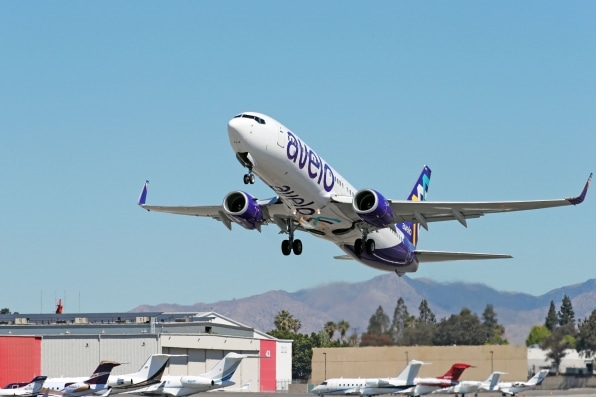
Breeze’s founding CEO is David Neeleman, who is renowned for launching JetBlue. “When I started JetBlue, it was a customer-service company that happened to fly airplanes,” he says. “Breeze is a tech company that happens to fly airplanes.” His cost savings come from creating an app and a tech stack that allow passengers to easily book, switch, or cancel itineraries, check in, and track flights without human interactions. “We don’t even have a call center: We use chat functions. We save a lot of money that way,” he says. It’s a strategy that aviation analysts say can even deliver better customer service—if executed correctly. Like JetBlue, Breeze has also added bells and whistles to its low-cost fares, which are often less than $400 round trip, even cross-country. It offers two levels of cabins, has a loyalty program, and offers food and beverage service, along with free streaming content and no change or cancellation fees.
Experts believe these upstart carriers stand a good chance of success. Khalid Usman, a partner in the aviation practice at Oliver Wyman, a global management consulting firm, says that while legacy carriers are trimming capacity (and driving fares higher) due to labor shortages and adhering to their inefficient hub-and-spoke models, newer, more agile companies avoid many of the same headwinds. Taking advantage of secondary or underutilized airports is also an especially smart strategy today. “In a post-Covid world, we’re seeing people moving to more remote locations, and if new LCCs and ULCCs can fly nonstop out of secondary airports and operate in a reliable way, this is a very good story,” Usman says.
Rising fuel costs are one area that could jettison success, but that remains a market-wide problem, Usman notes, and can be passed on to flyers should barrel prices inch too high. The key is for these upstarts to maintain high service standards while keeping prices as low as possible. If they erode passengers’ trust on either front, the jig is up.
Levy isn’t worried. “Avelo can’t compete with the market share, real estate, or loyalty programs of a United or a Delta,” he says. “We win by being simple.”
(38)


